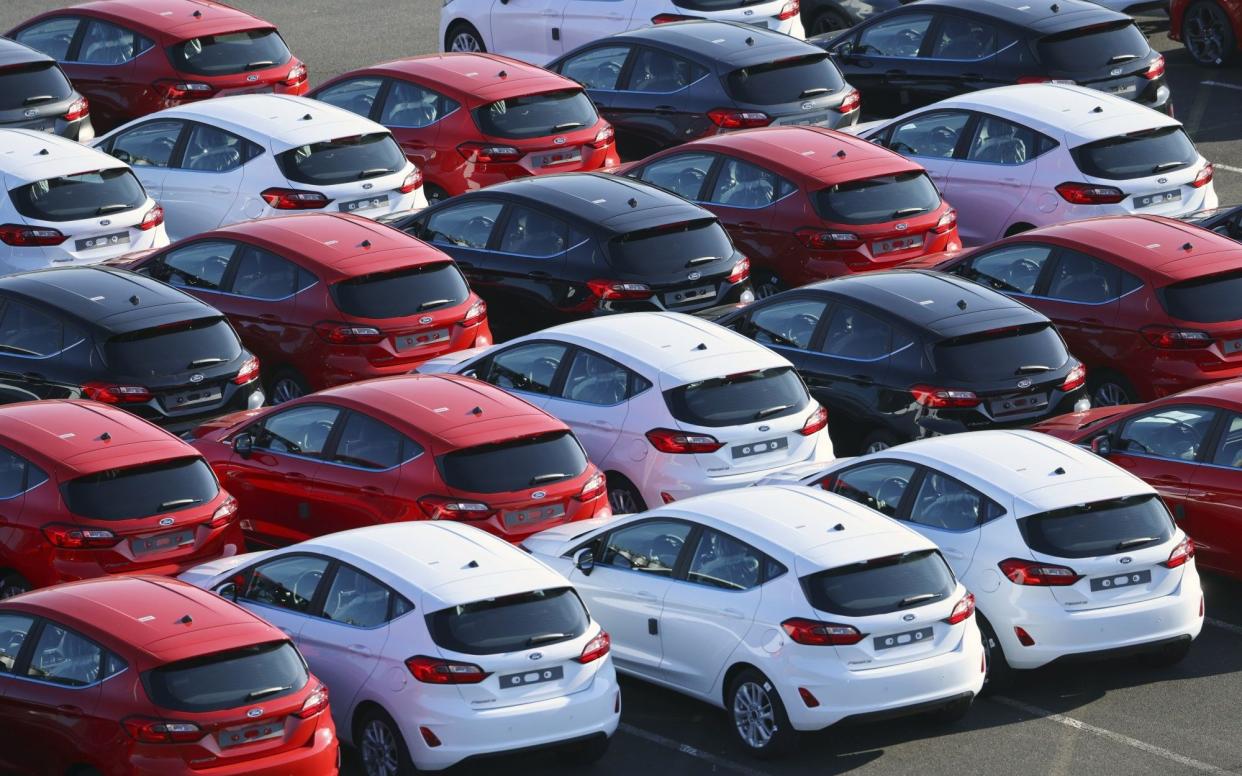Drivers struggle to get out of wider vehicles

Drivers are struggling to get out of parked cars because manufacturers are making newer models increasingly wider, research has found.
Analysis of 10 mid-range family cars showed that in many cases motorists have just 30 centimetres (less than 12 inches) to squeeze out of vehicles parked in standard bays.
The average width of the cars studied had grown about 13cm (5in), from 168cm (5ft 5in) when they were launched to 180cm (6ft) today.
British parking spaces are 240cm (7ft 9in) wide, a standard set half a century ago in the 1970s. This rule means there is 30cm (less than 12in) to each side of a modern car.
Analysts from Churchill Motor Insurance looked at ten popular mid-range family cars, including the Ford Fiesta, the Nissan Qashqai and the Kia Sportage.
The biggest growth in width was the Mini, with the modern version being 34cm (13in) wider than the original 1959 Cooper.
The Ford Fiesta, one of the most popular cars in UK motoring history, with millions sold during its 54 years in production, grew from 155cm (5ft) to 174cm (5ft 8in) wide – an expansion of 33cm (8in).
Nicholas Mantel, head of Churchill Motor Insurance, said: “Ask almost any driver and they will have a story about having to creatively escape their car due to a lack of space when in a car park, even crawling out through the boot.
“Widening cars, combined with parking bays that haven’t been redesigned to accommodate today’s models, mean motorists all over the country are at risk of damaging their cars through no fault of their own.”
A survey commissioned by the car insurer found that two in five of its 2,000 respondents said they have to squeeze themselves into their car when parked next to another vehicle at least once a month.
Just over a fifth (22 per cent) claimed they had resorted to climbing into their parked car through the boot at least once because they could not open the doors. Nearly a third of those questioned said they drive a bigger car than five years ago.
The most common reasons for doing so included wanting more internal space for comfort, liking the design of a larger vehicle, and requiring more space for leisure and work equipment.
Simon Williams, head of policy at motoring organisation the RAC, said: “After spending ages looking for a place to park, it can be very frustrating for drivers to discover there’s not enough room to get out of their vehicle, not least if you have a family in tow, have mobility issues or need room to use a wheelchair.

“Returning to find damage from a door being opened onto your vehicle is even more annoying due to the hassle and expense of having to get dents and scratches repaired.
“The problem centres on modern vehicles becoming wider due to the introduction of side-impact protection technology.”
Earlier this year, The Telegraph reported that new cars are growing 1cm (⅜ in) wider every two years, with some models now being too wide to fit on-street parking bays.
On-street bays are 180cm (6ft) wide, whereas some sports utility vehicles such as the BMW XM and Range Rover Sport are now more than 200cm (6ft 7in) wide.
In the 1970s, the Chartered Institute of Highways and Transportation set 180cm (6ft) wide and 4.8m (15ft 9in) long as the minimum for an on-road parking space, with the measure being adopted as a de facto standard across the continent.
While the minimum length was relaxed by the Department for Transport in 2016, guidance surrounding a space’s width remained the same, with a circular issued that year saying: “Whilst a minimum width of 1.8m (6ft) is specified, there is no longer a maximum width, nor a minimum or maximum length.”

 Yahoo News
Yahoo News 
